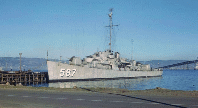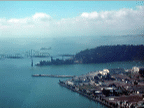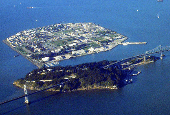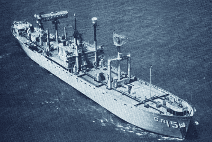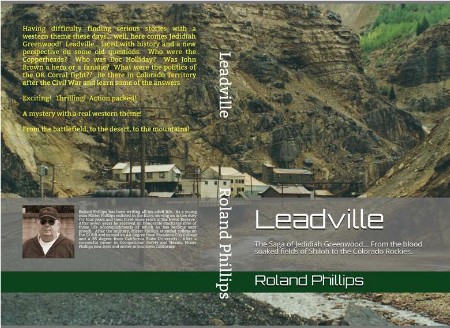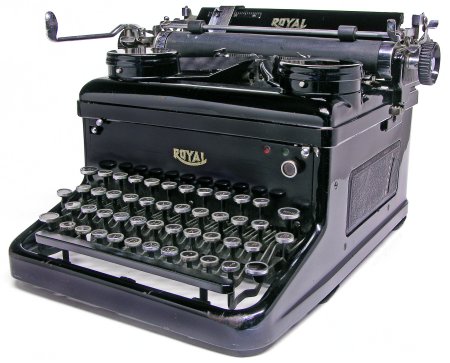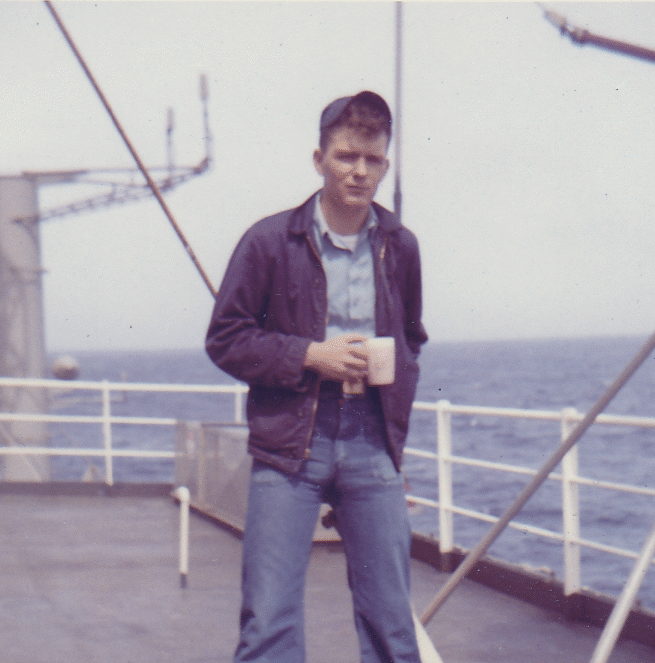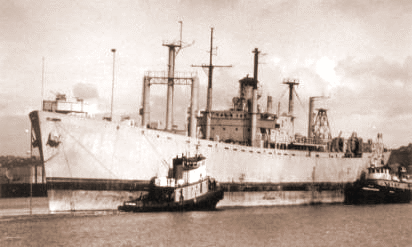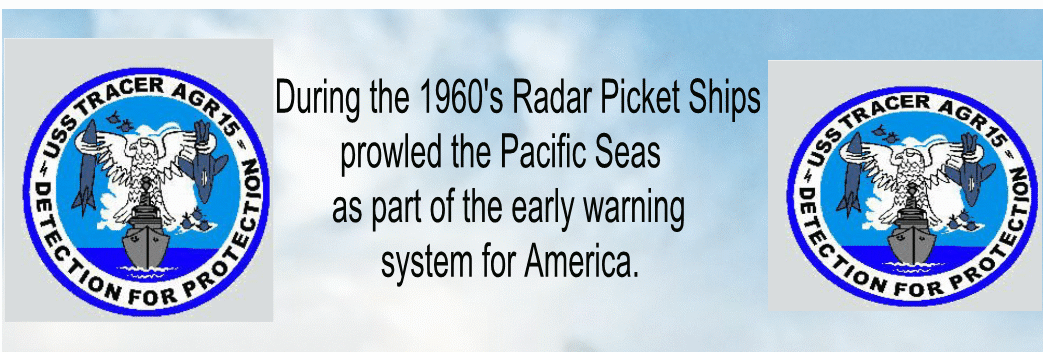Sailing through a Sea of Boredom, around Cape Tedium, and back again,
with an occasional side voyage into the Straights of Monotony.
When the first years of the 1960s came around, the national draft was in full force, and a recent high school graduate not going on to college or planning to start a family was certain to be dragged into the Army. Naturally, therefore, many young men chose to volunteer for a four-year enlistment in the Navy; so, how did these teenagers come to feel about the most momentous decision they had ever made?
This website is dedicated to guys who served aboard the USS Tracer during the 1960s; this is a site from the enlisted man’s point of view, those of us who went out on picket one day in late 1963, sailed out under the Golden Gate Bridge, did our duty at sea for forty days, only to come back walk up Market Street in San Francisco and immediately be assaulted by the strident, distinctly British, strains of, I Saw Her Standing There …
Who ARE these weird guys, these Beatles? All of a sudden, every time we were in port, Beatle’s music was everywhere, and we couldn’t get; she was just seventeen … you know what I mean … out of our heads.
However, all good things must naturally come to an end, and, as the years went by and our enlistments were up—all that aching to go home, all that putting up with inspections on number one hold, all that saluting and standing watches came to an end. And we left San Francisco and were never forced to listen to another Beatles song.
So Hey! Mike, Ray, Al, Davis, Archie, and Struthers—You Old Codgers—if you see this, think back to those days… And have a good laugh with me.
FOREWORD:
The creator of this website just turned eighty years old; to have served honorably on active duty for almost four years and then another three years in the inactive Naval Reserve was one of the most significant things the author did in life. Because of that honorable service, the person responsible for this website was able to go on to college on the GI Bill, obtaining a Bachelor’s Degree in 1973 from California State University in Los Angeles.
As a group, most young enlisted sailors of the day (the decade of the nineteen sixties) had similar feelings and experiences, and some of the attitudes young enlisted men had during their time aboard the Tracer, which the author mentions herein, are accurate, certainly at least from the author’s point of view. By way of illustration, we can remember standing on the wing of the bridge, next to the pilothouse, and upon realizing how long it was before our enlistment was up, aching for those months to go away so we could go home and forget about the military. How many young Deck Division Sailors who served aboard the Tracer had those same thoughts in that very same place? Most young enlisted men (of that era) experienced that ache at one time or another. But, after you get out and the years go by, your feelings begin to change. For example, the dislike you had for Marines (for most of those four years) slowly dissipates, and over the decades, things like the Marine Barracks Bombing in Beirut happen; and, all of a sudden, those feelings are gone, and when you see a young Marine, you feel some pride; after fifty-plus years, what you think is…. Well… Semper Fi!
The officers and senior petty officers who served aboard the Tracer, we are sure, were mostly good men, and those who went on with the Navy, we have no doubt, had distinguished careers. Some we liked, some we didn’t. But, Hey! That was fifty years ago. Many of us were nineteen and twenty years old during those years, and we must admit, at nineteen and twenty … we probably didn’t know half as much about life as we thought we did at the time.
So if anyone from the old Tracer comes across this website and reads something we said that is uncomplimentary… take it all with a grain of salt. We have described attitudes herein that are fifty-plus years old. Therefore, one can only say… GOD BLESS YOU and thank you all for your service.
Signed, Roland Phillips (formerly GMG3) (presently, really-old-guy)
The Typical Enlisted Man
At the beginning of 1963, after almost two years in the Navy stationed at a Naval Ordinance Storage Facility in the Nevada desert, north of Las Vegas, I was transferred to duty aboard the USS Tracer, a Radar Picket-Ship. My orders were to report aboard the USS Tracer at Hunter’s Point Naval Shipyard in San Francisco, so after leaving Nevada behind, I spent thirty days at home in Southern California and then on to San Francisco, the city beside the Bay, wherein there, in the middle of the Bay, sits the abandoned prison on Alcatraz Island.
After two years in San Francisco, I concluded the original inhabitants got it all wrong. San Francisco should have been a dungeon in the middle of the Bay, and Alcatraz Island—with its seagulls, snowy egrets, and cormorants—should have populated the hills beyond.
Stepping from a Greyhound bus for the first time in downtown San Francisco, I was totally confused but received good directions and soon was making my way down Market Street to a corner where jitney taxis stopped and ferried passengers to Hunter’s Point. So, for the first time, I learned what jitneys are; a jitney is a type of public transportation, like a cross between a private taxi and a fully public bus. Passengers on jitneys are taken on a fixed route, like with a bus, but the schedule is flexible, and the driver can make small detours to reach specific locations, which makes it similar to a taxi.
In any case, I rode the jitney that stopped at the Hunter’s Point Naval Shipyard, got off at the yard, and looked around. At this point, I entered a nearby Maintenance Office, found a friendly civilian employee, and asked about the Tracer. The Maintenance Yard worker informed me that the Tracer was docked at pier nine, undergoing maintenance. So I headed down to the waterfront, a little nervous that I was finally a saltwater sailor after two years in the Navy, and minutes later, I found Pier Nine. And there was the Tracer; the first sight was less than impressive. Juggling my seabag up the gangway and onto the quarterdeck, I saluted the American flag flying above the stern and asked the petty officer of the watch for permission to come aboard.
The petty officer looked at my orders and directed me to the Deck Division berthing spaces.
After that, I did what many others before me had done, found a locker and put my lock on same, filled out some paperwork in the ship’s office, and found the mess deck where I met a few sailors in the Deck Division. For the most part, Apprentice Seamen manned the Deck Division, which gave me a bit of an advantage because I was a Seaman first-class. Subsequently, some of those sailors became friends. After that first day, the Tracer remained in port for around a week—wherein I had my first exposure to the grit and grime of downtown San Francisco—then my first picket. Luckily, my first picket aboard the Tracer was on a southerly station.
Duty on a Radar Picket Ship in those days meant going out on pickets; a picket usually consisting of something like forty days at sea patrolling a specified station off the Pacific Coast; the Tracer’s assigned station might have been anywhere from five hundred miles off San Diego to five hundred miles off Alaska; pickets off the coast of Alaska were often harsh, often the weather was very bad.
On that first picket, I made onboard the Tracer—on a southerly station—the weather was not bad at all, very balmy in fact; the only thing meaningful was that I was seasick for three days; the worst feeling in the world, especially when you get no sympathy from anyone, mostly just ridicule. But at least on that first picket, I met Scotty, a big Gunner’s Mate 1st Class who, upon learning my first duty station after boot camp was on a Naval Ordnance Depot in the Nevada desert—that I had been working with Gunner’s Mate Technicians—figured I would make a good gunners-mate and arranged to get me into the Gunnery Division and out of some of the more unpleasant aspects of the Deck Division. Unfortunately, however, the Gunnery Division on the Tracer was tiny (consisting of one first-class petty officer and two unrated sailors). Accordingly, Gunnery came under the umbrella of the much larger Deck Division, and we were forced to stand deck-watches, e.g., periodically, standing to the helm, or sometimes standing as a bridge lookout, or sometimes standing as the fantail-safety-watch in case of a man going overboard.
So, what was life like being a saltwater sailor aboard a radar picket ship in the early 1960s? Well, about half the time—while I was aboard—the Tracer patrolled northern stations, meaning the weather was a factor. And, in rough weather, being confined aboard the sluggish Tracer sometimes made a hapless nineteen-year-old land lubber feel like perhaps two years in the army wouldn’t have been that bad after all. As an example ... Have you ever walked down a narrow passageway, and with each step forward, you have to brace yourself against a bulkhead (wall) on one side, then—as another crushing wave crashes into the prow of the ship—you lurch the other way, and your shoulder bangs against the bulkhead on the opposite side? Well, as I remember, that was a regular occurrence on the Tracer. In addition, the crew’s quarters on the Tracer were near the bow (foc’sle), so when the ship smashed headlong into a wall of water, loud, hollow banging, grinding, and grating noises (sounding like metal against metal) often resulted. Sometimes at night—tossing from safety rail to safety rail—in your bunk, you could almost believe the ship was about to tear itself apart; the noise could be deafening; can you imagine the blood-curdling racket that would result if a giant can opener with a dull blade were to cut through reinforced-steal plates? I still have a very vivid recollection, over sixty years old, of course, of standing a bridge watch on the port wing and looking out over the churning sea—the tumultuous northern seas roiled with swells around thirty feet high—and almost imagining I could reach straight out and touch the water. Sometimes serving aboard the Tracer at sea could be rough duty.
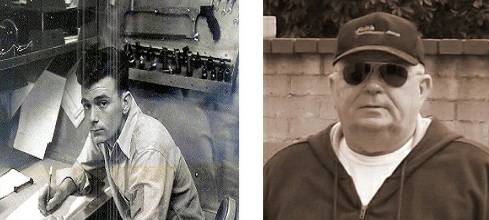
The above photographs: Left: the author of this website, Gunner's Mate 3rd class (GUNS) Roland Phillips, sitting at the desk in the Armory during a Picket in September of 1964, one of the last pickets Phillips made before being mustered out of the Navy at Treasure Island Naval Station with an honorable discharge.
More Photographs
90% of the time, when the USS Tracer was in port, the ship would dock at the Treasure Island Naval Station’s Navy pier, located in the middle of San Francisco Bay. Treasure Island—a man-made island—was created in 1936 and 1937 from fill dredged from the bay for the 1939 Golden Gate International Exposition. Before 1936, the only island there was the naturally occurring Yerba Buena Island. Treasure Island was constructed on shoals to the north of Yerba Buena and was connected to the island by a short isthmus. The first use of T. I. was for the Exposition, but when World War II broke out, the Navy traded with San Francisco to obtain the island for a Naval Base. The Naval Station was located in the middle of San Francisco Bay, halfway between Oakland and San Francisco. The Oakland Bay Bridge, which stretches between the two cities above the bay, is held up at the halfway point by pylons reaching up from Yerba Buena Island.
The photos shown below represent different views of the Islands. The photo on the left (taken in the 1950s) is of the Treasure Island Navy Pier; there is a Destroyer Escort docked at the pier. When the Tracer docked at this same pier during the 1960s, she would tie up on the opposite side, the north side of the pier. The photo in the center is an aerial view of Treasure Island, showing the Oakland Bay Bridge in the background and the Navy pier sticking out from the eastern end of the Island. The photo on the right is an aerial view of Yerba Buena Island; to the northwest is Treasure Island and the Navy Pier, while the Bay Bridge can be clearly be seen reaching away to the east.
